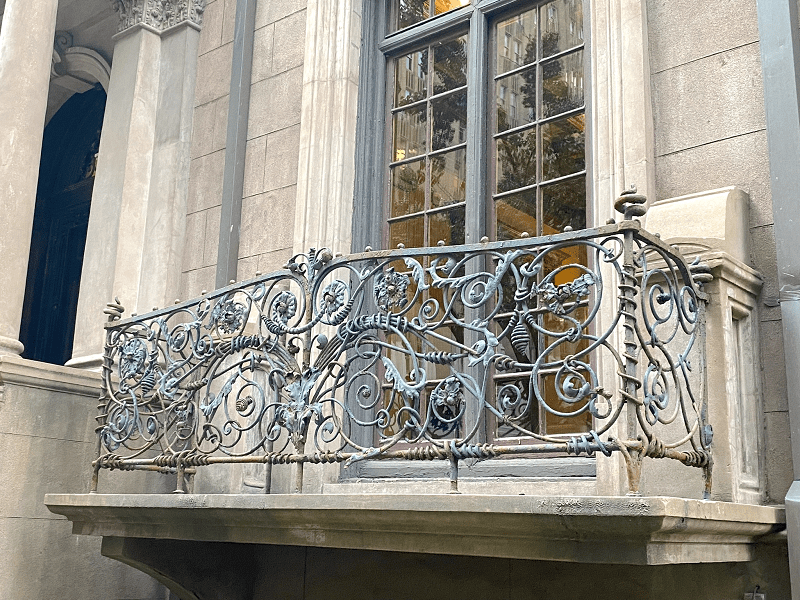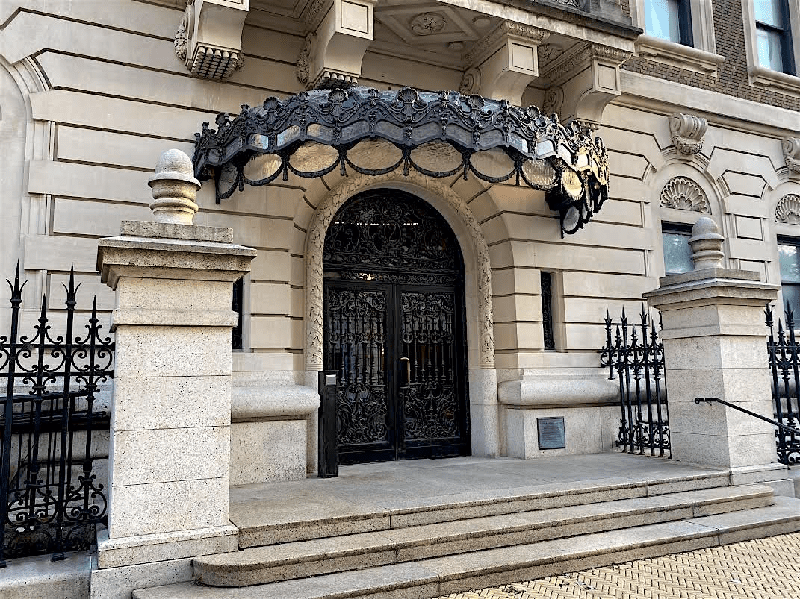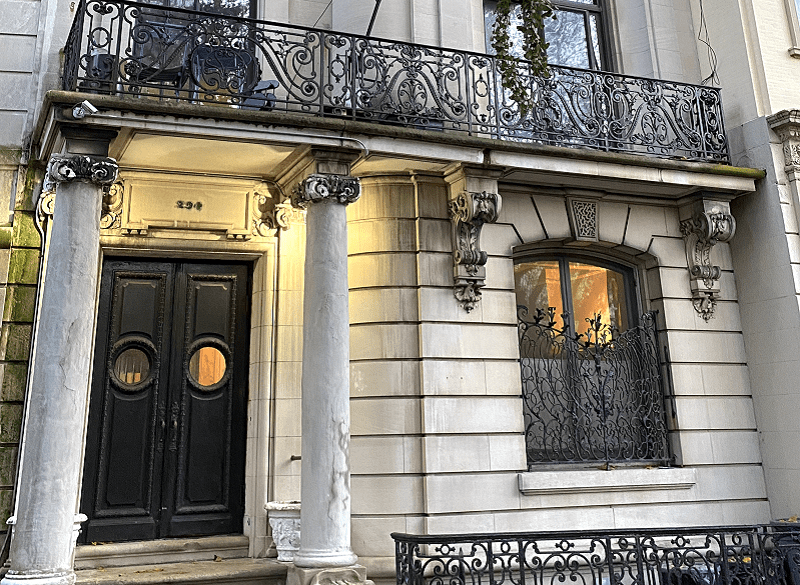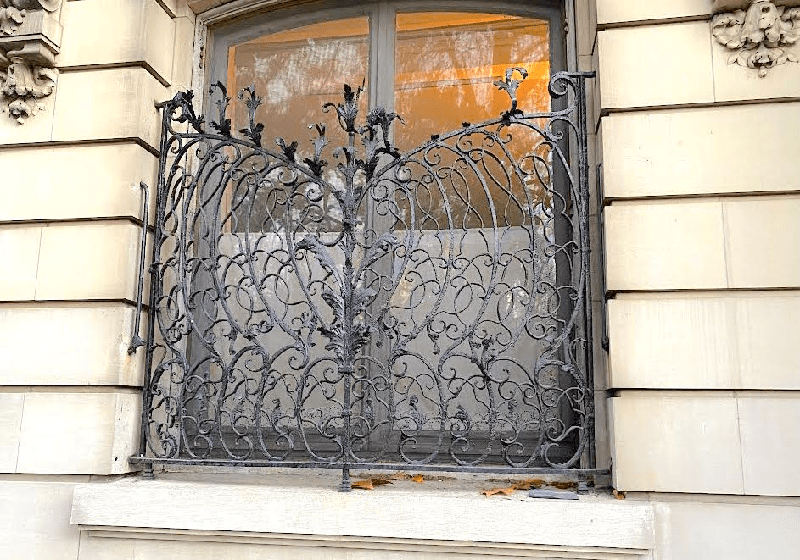Up to four centuries have passed since Manhattan was founded. The city’s buildings were images of such styles as Baroque, Rococo, Classicism and Modernism. The article will focus on the most famous buildings in Manhattan that were built in the Art Nouveau style. Read more on manhattan-future.
Murray Hill Mansion
The Murray Hill Mansion has magnificent iron window railings on a building dating back to the 1850s. The house is an aristocratic mansion built of brown stone. It is at 231 Madison Avenue, on the southeast corner of 37th Street.
It was built as one element of three detached mansions between 1852 and 1853. During these years, Murray Hill moved from a rural area to a beautiful neighborhood in the city. The project was funded by members of the copper baron Phelps family. During the 1880s, the house was expanded in size, and in 1904, JP Morgan purchased the 45-room house for a large family. The mansion was intended for his son and business partner Jack.
With its elements of harmony and symmetry, this mansion has its own elegant restraint compared to many townhouses on Murray Hill Street. However, this mansion has some decorative zest that makes it special. Namely, the mansion has wrought iron balustrades that are on each of the full-length facade windows. In general, this decorative element completely surrounds the entrance.

[Photo source: https://ephemeralnewyork.wordpress.com/]
The Murray Hill Mansion has its own collection of vines, flowers and curls. The building’s balustrades add a whimsical touch to the Art Nouveau look of the facade. The mansion is in a neighborhood with other large objects (the Morgan Library and Museum). The Morgan Museum is on the site of J. Morgan’s own mansion, which was on the northeast corner of the street but was bulldozed in 1928. To this day, this place, number 231, belongs to the museum.
Nevertheless, there is some evidence to imply that the building’s balustrades were not part of the mansion’s design in the prewar period, during which early members of the Phelps family moved in. The balustrades on the building’s facade appeared either during the reconstruction in 1888 or during a modest exterior work commissioned by Morgan after he purchased the mansion in 2002.
Andrew Carnegie Mansion
This building was touched by the Art Nouveau style, it is a former Gilded Age mansion on Fifth Avenue. The order was created by A. Carnegie, who wanted to create a family mansion on Fifth Avenue that would look modest, simple, but at the same time spacious among other mansions in New York. The architects fulfilled the client’s request.
The architects fulfilled A. Carnegie’s order in 1903. They managed to accomplish his request and did not disappoint the industrialist, who later became a philanthropist. The mansion had four floors, 64 rooms in total and was surrounded by gardens on both sides, so the final result certainly looked spacious.

[Photo source: https://ephemeralnewyork.wordpress.com/]
Although this building for the A. Carnegie family looks quite modest and simple, the highlight of the Carnegie’s Georgian-style home was to demonstrate the family’s modesty and restraint, compared to many other towering marble and stone castles that were along Fifth Avenue at the time.
It can be argued that even an elegant mansion like this one, which was built and designed for the English country manor style, was still influenced by other styles. There is a possibility that the design of this mansion was influenced by new trends that prevailed among European designers at the time. One of the elements of this building for the A. Carnegie family is a glass and iron canopy with its curved shape and floral motifs, which is above the main entrance. Most likely, this decorative part is inspired by the Art Nouveau style.
Despite the fact that Art Nouveau did not dominate in NYC at any time, in the early twentieth century it did dominate in large European cities. European countries had special buildings. Clothes and objects were designed using graceful and flowing lines and curls. Their function was to imitate the stems of flowers, petals and other forms that appeared in nature.
It is not known for certain whether the master who took on this commission was influenced by examples from other countries. Nevertheless, the architects of the Carnegie Mansion definitely approached this construction from a special angle. This building has a charming touch of the Gilded Age. Since 1976, this building has been used as a home for the Cooper-Hewitt Museum.
House with a window lattice on Riverside Drive
This Art Nouveau row house on Riverside Drive is greeted by a beautiful window lattice. This street, which is a rare avenue in Manhattan, was designed according to the famous Commissioners’ Plan of 1811. The plan laid out the basis for a fairly rigid grid of streets on this avenue, in the midst of an undeveloped city at the time, which would create a very charming appearance.

[Photo source: https://ephemeralnewyork.wordpress.com/]
Riverside Drive has a rather unusual structure for Manhattan. Instead of a typical straight line, this avenue passes through the territory of the park of the same name. Then it breaks up into thin roads that run along the Hudson River for carriage transport.
A four-story row house for a whole family is at number 294. The eye of every attentive resident is drawn to one of the building’s decorative elements – an attractive wrought iron grille that protects the wide front window in the living room.
The construction of the building at number 294, which was designed as a single-family house, was completed by the architects in 1901. It turned out to be a magnificent looking and almost intact example of the Beaux-Arts style. The latter was in vogue among the urban elite of the early twentieth century.
Modern component of the house with a window lattice
The house on Riverside Drive has the most impressive facade features. It is orderly, has its own asymmetrical arrangement, exquisite limestone carvings, an elegant Ionic portico, as well as a slate mansard roof and exquisite dormer windows. The highlight of this Art Nouveau house is its luxurious ironwork, symbolizing the wealth that was embodied in the style of the time. This building, in particular, was designated as a prominent and significant landmark for Manhattan.
The lattice of the front window, which is in the middle of the living room, is undoubtedly the origin of the Art Nouveau style, which was popular in European countries at the beginning of the last twentieth century, but was not well received in the United States. Thus, this part of the house began to correspond more to the latest Art Nouveau style.

[Photo source: https://ephemeralnewyork.wordpress.com/]
The house with the window lattice is complemented by graceful and flowing lines with curls, whose function is to imitate flower stems and other natural forms. The original lattice from the 1900s was described as intricate and naturalistic. The beauty of this mansion lies in the use of Art Nouveau style.
So, in modern Manhattan, there are many buildings that use elements of the Art Nouveau style. Although some of the buildings are more than a century old, they contain parts of the modern style decoration, which means that the designers were influenced by the style known among European countries.